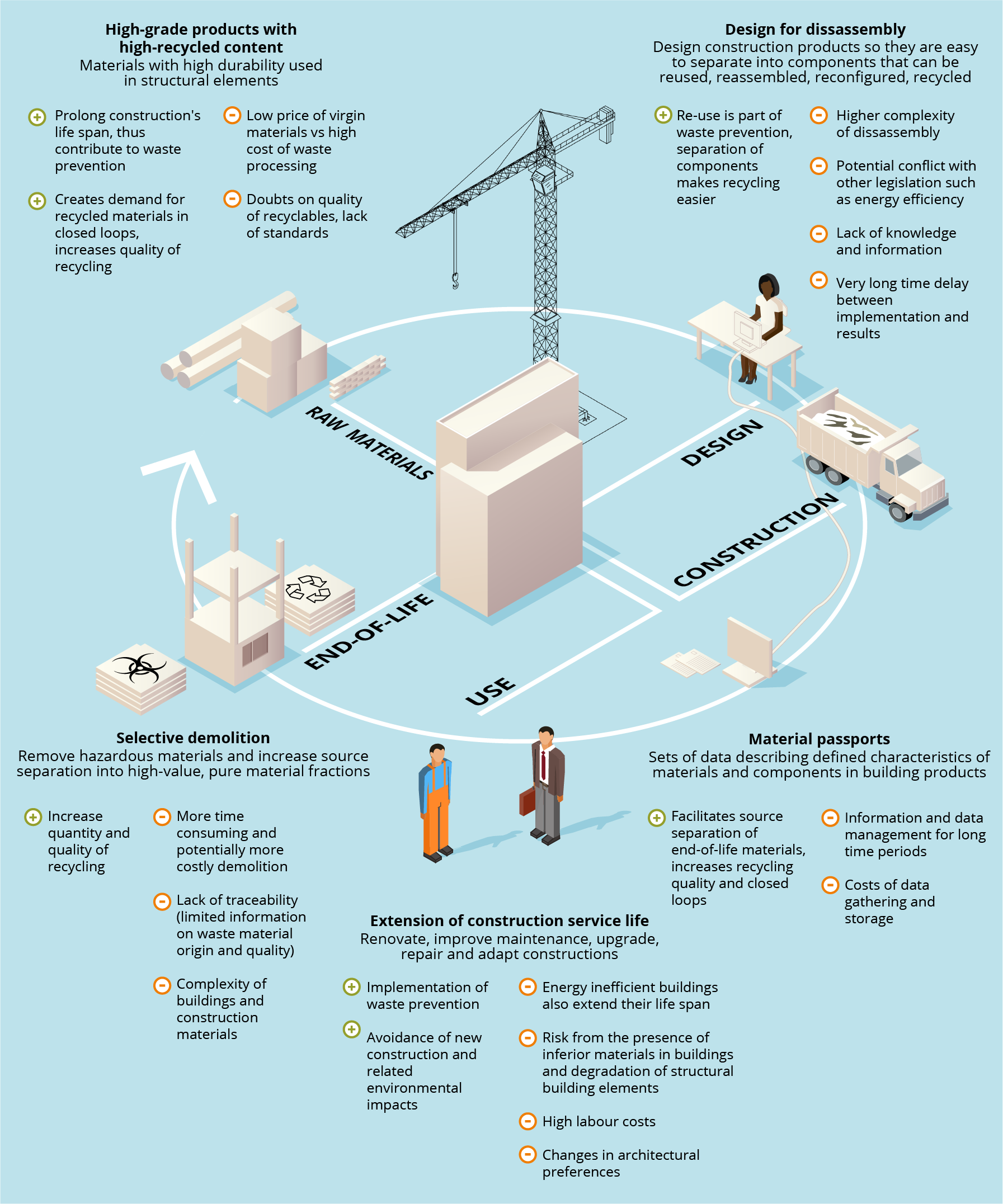The EEA briefing ‘Construction and demolition waste: challenges and opportunities in a circular economy,’ says more must be done in preventing or recycling the large amount of waste produced by the construction and demolition sector in Europe. Such waste, such as scrap metal, used cement or wood products, currently make up the largest waste stream in the European Union. At present, many of the material streams from demolition and renovation works are not suitable for reuse or high-grade recycling. This is stalling efforts in shifting to a circular economy. The briefing examines how circular economy-inspired actions can help achieve EU waste policy objectives, such as waste prevention and increasing the quantity and quality of recycling for the waste produced on building sites, while also reducing hazardous waste materials. The briefing is based on a report compiled by the EEA and the European Topic Centre on Waste and Materials in a Green Economy.
The briefing notes that construction and demolition waste totaled 374 million tonnes in the EU in 2016, excluding excavated soil. The high volume and nature of produced waste are challenging to manage, but also present a clear opportunity to implement sound waste management practices according to the circular economy principles. Besides, the construction sector is considered a priority sector according to the forthcoming European Commission circular economy action plan.
While EU countries are on track to meet the 70 % recovery target of 2020 with most countries already exceeding the target in 2016, the briefing says, closer scrutiny of waste management practices at national level shows that recovery of construction waste is largely based on low-value backfilling operations — using collected waste and rubble to fill holes on construction sites, and low-grade recovery such as using recycled and crushed cement or stones (aggregates) in road construction. The briefing notes that better waste prevention and higher and better quality recycling can be achieved if certain measures are followed to improve pricing, improve information on which materials are used in existing and new buildings and to improve users’ trust in the quality of using secondary materials like recycled aggregates. Circular economy-inspired actions, like improved information sharing on material properties, and better re-use of secondary raw materials can go a long way in increasing circularity in the sector.


Document Actions
Share with others